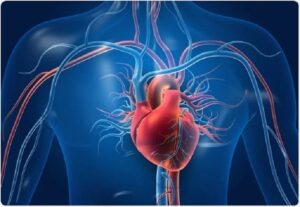
Staff In Busy Lobby Area Of Modern Hospital
What Does a Mesothelioma Attorney Do?
A mesothelioma attorney is a legal expert who helps victims of asbestos exposure seek justice and compensation. They handle all aspects of the legal process, from gathering evidence to representing clients in court. These attorneys specialize in mesothelioma cases, ensuring they have the knowledge and experience to navigate the complexities of asbestos-related laws.
The Importance of Specialization in Mesothelioma Cases
Specialization is crucial in mesothelioma cases. Attorneys who focus solely on mesothelioma have a deep understanding of the disease and the legal landscape surrounding it. This expertise allows them to build strong cases and maximize compensation for their clients. They are familiar with the specific challenges these cases present, such as proving asbestos exposure and identifying liable parties.
How Mesothelioma Attorneys Maximize Compensation
Mesothelioma attorneys work tirelessly to secure the highest possible compensation for their clients. They do this by:
- Gathering comprehensive evidence: This includes medical records, employment history, and witness statements.
- Identifying all liable parties: Often, multiple companies may be responsible for asbestos exposure.
- Negotiating settlements: Most cases are settled out of court, which can be less stressful for victims and their families.
- Preparing for trial: If a fair settlement cannot be reached, they are ready to take the case to court to fight for their clients’ rights.
By leveraging their expertise and resources, mesothelioma attorneys ensure that victims receive the compensation they deserve.
Choosing the Right Mesothelioma Attorney for Your Case
Key Qualities to Look For
When searching for an attorney, it’s crucial to find someone with experience in handling mesothelioma lawsuits. Here are some key traits to consider:
- Experience: Look for a lawyer with a proven track record in handling mesothelioma cases. They should have years of experience and a history of successful settlements and verdicts.
- Specialization: Ensure the attorney specializes in mesothelioma or asbestos-related cases. This specialization means they understand the complexities of these cases and can navigate them effectively.
- Compassion: A good mesothelioma lawyer should be empathetic and understand the emotional and physical toll the disease takes on you and your family.
- Resources: The law firm should have ample resources, including a team of experts and access to medical professionals, to build a strong case.
- Communication: Choose an attorney who is responsive and keeps you informed throughout the legal process.
Questions to Ask During Your Consultation
Before hiring a mesothelioma attorney, it’s important to ask the right questions during your consultation. Here are some questions to consider:
- How many mesothelioma cases have you handled?
- What is your success rate in securing compensation for your clients?
- Do you work on a contingency fee basis?
- How will you keep me updated on the progress of my case?
- Can you provide references from past clients?
- What resources does your firm have to support my case?
- How long do you expect the legal process to take?
Evaluating Experience and Track Record
Evaluating an attorney’s experience and track record is essential in choosing the right one for your case. Here are some steps to help you evaluate:
- Research: Look up the attorney’s background, including their education, years of practice, and areas of specialization.
- Case Studies: Ask for case studies or examples of past mesothelioma cases they have handled successfully.
- Client Testimonials: Read reviews and testimonials from previous clients to gauge their satisfaction and the attorney’s effectiveness.
- Success Rate: Inquire about their success rate in securing compensation for mesothelioma clients.
- Professional Associations: Check if the attorney is a member of professional organizations related to mesothelioma or asbestos litigation.
By considering these factors, you can make an informed decision and choose a mesothelioma attorney who will effectively represent your interests and help you secure the compensation you deserve.
The Legal Process in Mesothelioma Cases
Filing a Mesothelioma Claim
The first step in the legal process is filing a mesothelioma claim. This involves choosing an experienced attorney who specializes in asbestos cases. The attorney will help gather all necessary documentation, including medical records and evidence of asbestos exposure. Once the claim is prepared, it is officially filed with the court.
The Discovery Phase
After the claim is filed, the discovery phase begins. During this phase, both sides gather information to support their case. This includes answering questions, producing documents, and participating in depositions. Depositions are sworn statements taken under oath, often conducted at the plaintiff’s home for convenience.
Settlement vs. Trial
Many mesothelioma cases are settled before reaching trial. Defendants may offer a settlement to avoid the uncertainty of a court verdict. If a settlement is not reached, the case proceeds to trial. During the trial, both sides present their evidence, and a judge or jury makes a decision. If the plaintiff wins, they may start receiving compensation a few months after the verdict, provided there are no appeals.
Compensation and Fees in Mesothelioma Lawsuits
Understanding Contingency Fees
Mesothelioma attorneys usually work on a contingency fee basis. This means clients only pay if they win the case or secure a settlement. This arrangement helps victims avoid upfront costs. The fee is typically a percentage of the compensation awarded, agreed upon before the case starts. This way, victims can focus on their health without worrying about legal expenses.
Types of Compensation Available
Victims of mesothelioma can receive various types of compensation, including:
- Medical Expenses: Covers treatments, medications, and hospital visits.
- Lost Wages: Compensates for income lost due to illness.
- Pain and Suffering: Addresses the emotional and physical distress caused by the disease.
- Travel Costs: Reimburses travel expenses for medical treatments.
- Funeral Expenses: Covers costs related to end-of-life arrangements.
How Attorneys Help Secure Maximum Compensation
Experienced mesothelioma attorneys play a crucial role in securing the highest possible compensation. They gather evidence, identify responsible parties, and build a strong case. Their expertise in asbestos laws and regulations ensures that victims receive fair compensation. Additionally, they can negotiate settlements or take the case to trial if necessary, always aiming to maximize the financial recovery for their clients.
Common Challenges in Mesothelioma Litigation
Proving Asbestos Exposure
One of the biggest hurdles in mesothelioma cases is proving asbestos exposure. Many victims were exposed decades ago, making it hard to trace the source. Attorneys must gather old records, employment histories, and witness testimonies to build a strong case.
Dealing with Multiple Defendants
Mesothelioma lawsuits often involve multiple defendants. This is because many companies may have contributed to the asbestos exposure. Lawyers need to identify all responsible parties and hold them accountable, which can be a complex and lengthy process.
Navigating State and Federal Laws
Mesothelioma cases must comply with both state and federal laws. Each state has its own rules and deadlines for filing claims. Attorneys must be well-versed in these laws to ensure that cases are filed correctly and on time.
Support Beyond Legal Representation
Emotional and Psychological Support
A mesothelioma diagnosis can be overwhelming, not just for the patient but also for their family. A skilled attorney understands the emotional toll and often provides resources for emotional and psychological support. This can include connecting clients with support groups, counseling services, and mental health professionals who specialize in dealing with chronic illnesses.
Connecting with Medical Experts
Attorneys specializing in mesothelioma cases often have established relationships with leading medical experts. These connections can be invaluable for patients seeking the best possible care. Whether it’s finding a top oncologist or getting access to cutting-edge treatments, a good attorney can help connect clients with medical experts who can make a significant difference in their treatment journey.
Resources for Financial Assistance
The financial burden of mesothelioma treatment can be substantial. Beyond legal compensation, attorneys can guide clients to various resources for financial assistance. This might include helping them apply for grants, find charitable organizations, or navigate insurance claims to cover medical expenses. By providing these resources, attorneys help ease the financial strain, allowing patients to focus more on their health and well-being.
The Impact of a Skilled Mesothelioma Attorney on Your Case
Case Studies and Success Stories
A skilled mesothelioma attorney can make a significant difference in the outcome of your case. For instance, many clients have used compensation for various needs such as medical bills, daily living expenses, and even vacations with family to rest and recharge. These success stories highlight the importance of having an experienced lawyer by your side.
The Difference Between Average and Top Attorneys
The difference between an average attorney and a top mesothelioma attorney is often seen in the amount of compensation secured. Top attorneys have a deep understanding of state and federal laws regarding asbestos regulations. They are always ready to take the case to court if necessary, which can lead to a bigger compensation package.
Long-Term Benefits of Expert Legal Representation
Hiring a skilled attorney not only helps in securing immediate compensation but also offers long-term benefits. A knowledgeable mesothelioma attorney can help you understand your legal rights and guide you through every step of the legal process. This ensures that you can focus on what matters most—your health and family.






